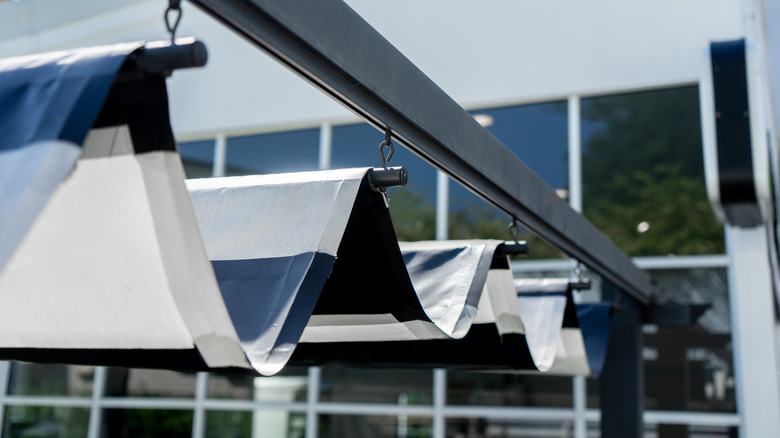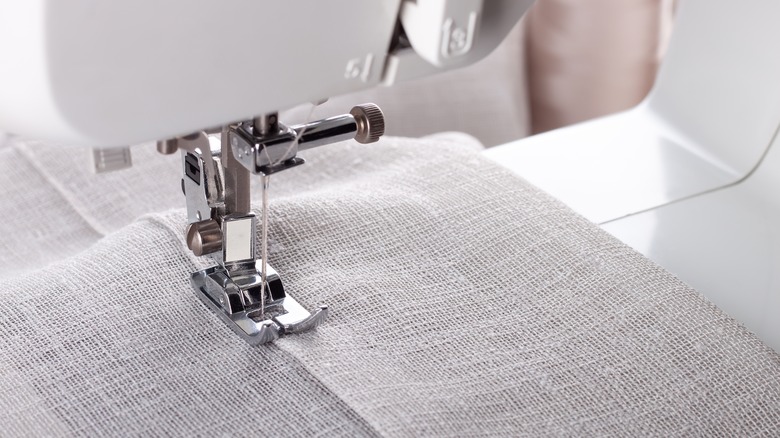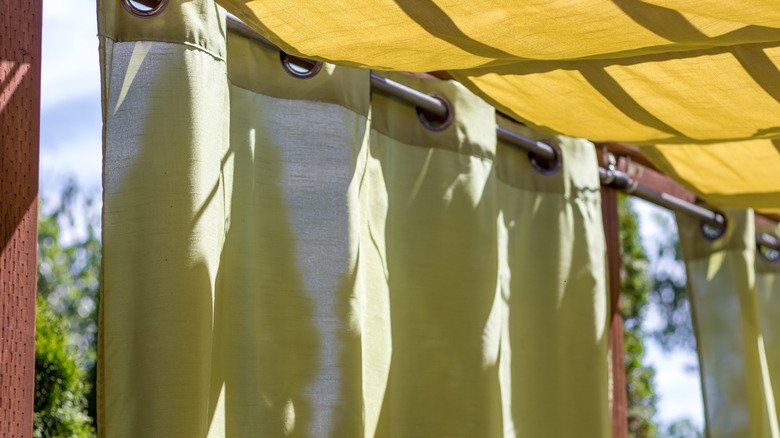Shade Your Outdoor Space With This DIY Retractable Canopy
When the season for backyard barbecues, pool parties, and patio drinks rolls around, hosting can be a bummer if you don't have enough shade to keep everyone cool. If your yard doesn't have a setup that allows lots of shade and your landscaping options are minimal, there are still easy ways to make sure your guests won't melt. We have the perfect DIY canopy to provide shade all summer long. The best part is that this lightweight covering will retract, letting you control your shade and keeping it out of the way when it's not needed.
If you live in an area with all four seasons, you're aware that as much as you hate the sun right now, you'll be craving it later in the year when temperatures drop. Building something dynamic, like this retractable canopy, will allow you to adjust your space to meet your changing needs all year round. Why not gather supplies and start your newest DIY instead of grappling for limited seats in the shade or watching a hastily bought umbrella fight the wind?
Materials and assembly
The base elements of this DIY project are PVC pipes, sailcloth, and wooden support. Drilling holes in the PVC pipe make the canopy (this DIY will require you to break out the drill) and sewing the cloth (you might as well grab the sewing machine while you're at it) into panels that slide over the pieces of PVC. The pipes, draped with cloth, hang along cables strung between wooden beams like a clothesline. Because they're suspended this way, the PVC rods can all be pushed to one side or pulled out for maximum coverage. We recommend a sailcloth specifically as the canopy material because it's lightweight enough not to put a strain on your construction while also being durable enough to hold up to outdoor conditions and still provide protection from the sun.
The canopy's frame is meant to be attached to an already-standing solid structure like a patio or pergola. Still, you can also drive the canopy frame straight into the ground and secure it with concrete — just make sure you get wooden planks that are slightly longer to compensate.
Getting the most out of your canopy
One of the best parts about this DIY is the level of customization it allows. The PVC pipes need to be spray-painted, and the wood can be painted or stained to your preference as long as you've got a paint roller on hand. This project can accommodate a wide array of looks between paint and canopy fabric options, allowing you to choose a color pallet that blends in or stands out. The lightweight nature of this construction also lets you take full advantage of placement to maximize your shade gains and is easy to combine with other tricks to keep even sunny patio spaces cool in the summer.
For a complete list of supplies you'll need and instructions on assembly, head over to HGTV's project page. Make sure you have at least two people around when you're putting together the wooden structure and assembling the final product, and enjoy luxuriating in your newly shaded space!


